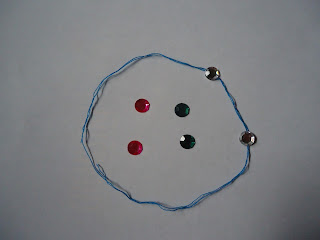Make a model of your three favorite elements on the Periodic Chart. The models must be 3-dimensional and be made out of common objects around your home. Place photos of your three models with descriptions on your blog. Your models must include the appropriate number and positioning of protons, neutrons and electrons. (Review content slide: Atoms and atomic structure)
Hydrogen: 1 proton, 1 electron, 0
neutron
Helium: 2 protons, 2 electrons, 2 neutrons
Oxygen: 8 protons, 8 electrons, 8
neutrons
Questions:
1. What is the atomic number for each of your models?
1. What is the atomic number for each of your models?
Element
|
Atomic Number
|
Helium
|
2
|
Oxygen
|
8
|
hydrogen
|
1
|
2.
What is the atomic mass number for each of your models?
Element
|
Atomic Mass
|
Helium
|
4.002602
|
Oxygen
|
15.9994
|
hydrogen
|
1.00794
|
3.
In your models, which two subatomic particles are equal in number?
- The two subatomic particle that are equal in number are protons and electrons.
4. How would you make an isotope for one of your models? What would change
with the model?
- An isotope is when an atom has the same number of protons but different number of neutrons. To make the model an isotope, a neutron would need to be added next to the proton. This would cause a change in the mass number, since mass number is the number of protons and neutrons in the nucleus.
5. Considering the overall volume of your element models, what makes up most of
the volume of an atom?
- The nucleus where the protons and neutrons are located makes up most of the volume of an atom.
6. For one of your models, show with another image what happens when energy
excites an electron.
- This is what happens when oxygen is excited. The electrons jump from the lowest level to the highest level. Once it’s excited, it will then go back to its ground state.
7. Once the electron is excited, what do we typically observe when the electron
returns to the ground-state?
- Once the electron is excited, we typically see the electron emit a quantum of energy as the atom moves back down to the lower level eventually reaching ground state.
8. Why are some elements different colors when they are excited? Hint: when
electrons are excited (by something like heat from an explosive) they move up
to another orbital and when they fall back they release the energy in the form
of light.
- Some element are different colors when they are excited is because of the different quantities of electrons losing energy.
9. With the Fourth of July coming up quickly, explain how the colors of
fireworks arise.
- The flame colors from the fireworks are caused the electron structures of atoms of the specific elements. Specific elements will produce different colors when lit.
10. Explain the overall organizational structure of the periodic table.
- The periodic table is categorized into columns and rows. The columns are called groups or also known as family. Elements in a group have similar chemical properties. They are often categorized into two different groups; group A and group B. Group A is known as the main group element. This group tells us about the valence electron or how many electrons are in the outermost shell. Group B, transition element. The rows on the periodic table are called period. The period tells us how many main electron shells are in that atom.
11.
List two example elements for each of these groups or classes:
- Alkali Metals, Alkaline Earth, Halogens, Noble Gases, Transition Metals, Non-Metals, and Metalloids.
- Alkai Metals: Lithium, Sodium
- Alkaline earth: Magnesium, Calcium
- Halogens: Fluorine, Iodine
- Noble gases: Helium, Neon
- Transition Metals: Iron, Zinc
- Non-metals: Hydrogen, Oxygen
- Metalloids: Boron, Silicon




No comments:
Post a Comment